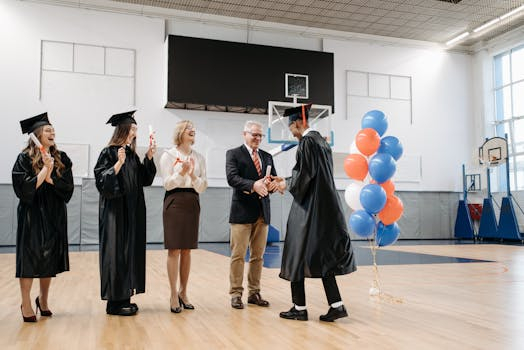Bridging Persistent Educational Achievement Gaps Across Communities
Achieving equal educational opportunities for all students is a pressing goal and ongoing challenge for many communities. While strides have been made in promoting diversity and inclusivity in education, persistent achievement gaps continue to exist across communities. These gaps, often caused by systemic issues, contribute to inequality in academic experiences and outcomes. However, there is hope in bridging these gaps and creating a more equitable educational landscape. In this article, we will explore the persistent achievement gaps in education and discuss ways to bridge them across communities through intentional and strategic efforts.
Understanding Educational Achievement Gaps
Educational achievement gaps refer to the differences in academic performance and educational outcomes between different groups of students. These gaps can be observed in a variety of areas, including standardized test scores, high school graduation rates, college enrollment, and completion rates. The groups most commonly affected by achievement gaps are students of color, low-income students, students with disabilities, and English language learners.
There is no one single cause of achievement gaps, and the reasons for them can vary greatly depending on the community and context. Some key contributing factors include unequal access to quality education, lack of resources and support, and socio-economic disparities. Additionally, these gaps can be perpetuated by implicit biases and systemic discrimination, which can negatively impact the academic experiences of marginalized student groups.
The Consequences of Achievement Gaps
Achievement gaps not only limit equal opportunities for students but also have far-reaching consequences for individuals and society as a whole. Students from marginalized groups often face barriers when pursuing higher education or entering the workforce, which can lead to lower income levels and limited career prospects. These gaps also perpetuate cycles of poverty, as students from low-income families are more likely to face academic challenges and lower success rates.
Beyond the individual-level impact, achievement gaps also have significant implications for society. A well-educated population is critical for a thriving economy and a more just society. The persistence of achievement gaps can undermine these goals and perpetuate inequality, creating a fragmented and divided community.
Bridging the Gaps Across Communities
While closing educational achievement gaps may seem like an insurmountable task, it is not impossible. There are steps that communities and schools can take to bridge these gaps and ensure all students have equal opportunities to succeed. One crucial approach is to address the root causes of these gaps rather than just addressing the symptoms.
Provide Equitable Resources and Support
A crucial aspect of bridging achievement gaps is ensuring that all students have equitable access to quality education and resources. This can involve providing extra academic support and resources for students from marginalized backgrounds, including tutoring, mentorship programs, and after-school programs. Schools can also invest in hiring more diverse and culturally competent staff to support students and provide role models for all students to look up to.
Address Implicit Bias and Discrimination
Implicit bias and discrimination can manifest in subtle but harmful ways in the education system. To bridge achievement gaps, schools must actively work towards creating an equitable and inclusive learning environment for all students. This can involve implementing diversity and sensitivity training for staff, promoting cultural competency, and fostering a welcoming and supportive school climate for students from all backgrounds.
Partner with Parents and Communities
Parental and community involvement are key components of a successful education system and essential in bridging the achievement gaps. Schools can engage parents and community members in the education process by involving them in decision-making processes, creating parent-teacher associations, and promoting open communication between school and home. Community partnerships can also provide additional support and resources for students, such as mentorship programs and job opportunities.
Implement Targeted Interventions
Targeted interventions, such as personalized learning plans and individualized education programs, can also help bridge achievement gaps by identifying and addressing the specific needs of students. These interventions can provide tailored support for students with disabilities, English language learners, and those from low-income backgrounds, ultimately helping them reach their full potential.
Conclusion
The persistence of educational achievement gaps is a complex and multifaceted issue that requires deliberate and sustained efforts to overcome. By understanding the causes and consequences of these gaps and implementing targeted interventions, we can work towards closing the gaps and creating a more equitable educational landscape for all students. It is only through collaborative and intentional efforts by communities, schools, and individuals that we can bridge the achievement gaps and create a society where every student has an equal opportunity to thrive.











